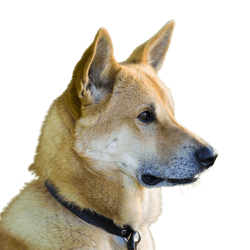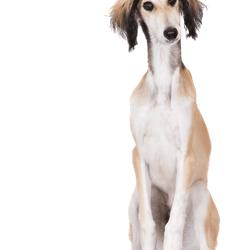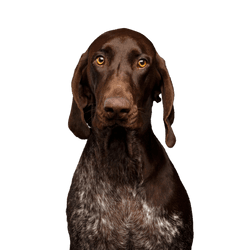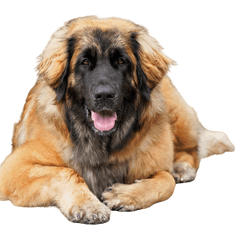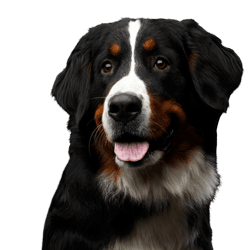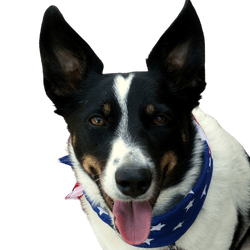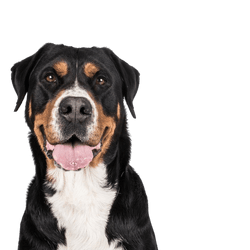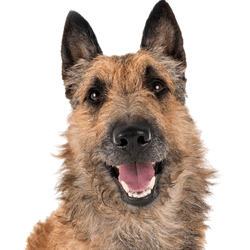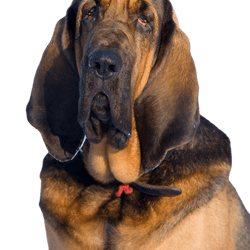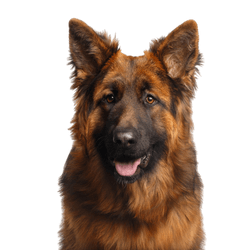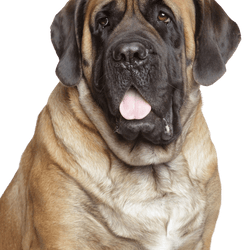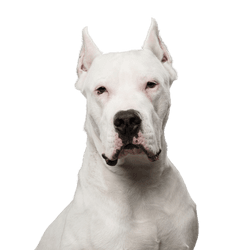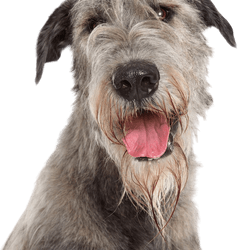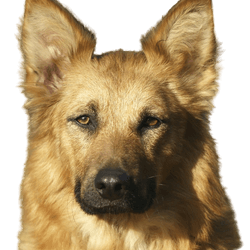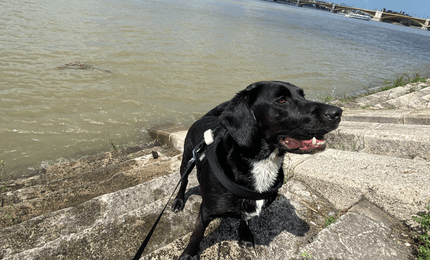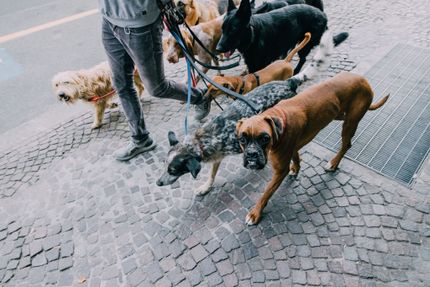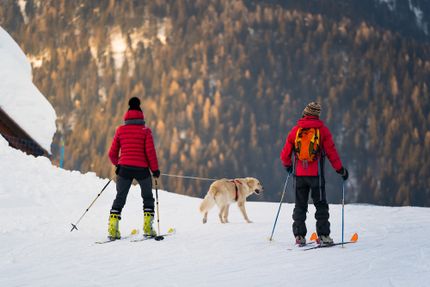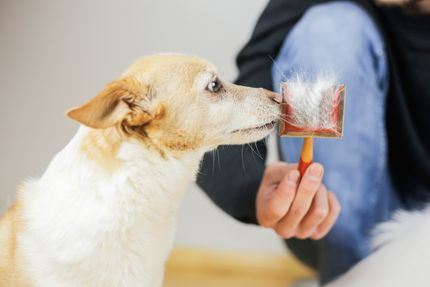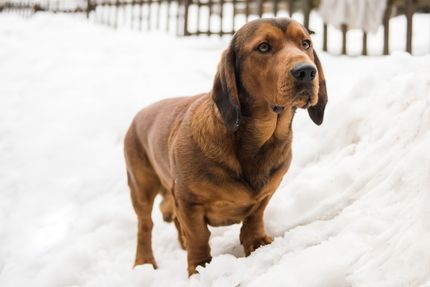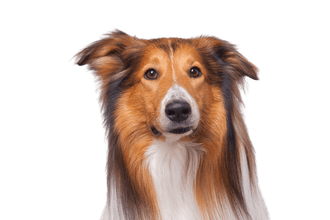
Collie Breed description: Character & Co
Collie
Facts & Origin
What is the origin of Collie?
Cynologists believe that the Romans brought the ancestors of today's Collies to Scotland as early as the 5th century BC. Here they multiplied with native herding dogs. For many centuries they provided valuable service in the rough terrain of the Highlights. They kept large flocks of sheep together and rode largely independently. The special situation in the Scottish terrain required courage and speed. After all, there were attacks by bears and wolves time and again, which Collies knew how to fend off skilfully. Already in the book "Dogs" by H.D. Richardson, which was published in 1857, the author told about the heroic deeds of the Collies. According to the story, during a storm, a brave collie rescued an entire flock of sheep that had run away in panic into the mountainous countryside. One of the prominent lovers of the breed is Queen Victoria. Since 1955, the Longhaired Coll ie has been recognized by the International Canine Federation (FCI). The registration of the Collie Shorthair took place only 19 years later.
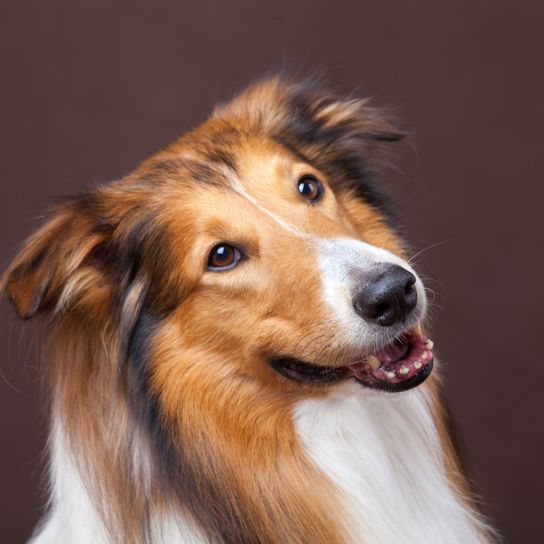


| Alternate Name | Smooth Collie |
| Origin | Scotland |
| Life expectancy | 10 - 14 years |
| Care requirements | - |
| Activity level | high |
| FCI group | Sheepdogs |
| AKC group | Herding Group |
| KC group | Pastoral Group |
Collie mixes
Attitude, character and temperament of the breed
What are typical character traits of Collie?
Collies are characterized by their friendly nature and intelligence. They bond closely with their humans, so if you rescue a Collie in need, it will thank you forever. With their "will to please", they are easy to train even by owners with little dog experience. If it has enough exercise, it will even feel comfortable in an apartment in the city. It will gladly go on outings with you in the countryside. In addition, the breed is perfect for families. With the smallest roommates, the Smooth Collie gets along excellently. If it sees its family in danger, the protective instinct comes through. The four-legged dog announces strangers with loud barking.
Character
Usage

Health and breeding information
What are typical Collie diseases?
If you are interested in a Collie in the color blue merle, take a close look at the pedigree. Similar to the Border Collie, there is an increased incidence of diseases when both parents have the typical silvery-blue colour, and Collie puppies are often born deaf or blind. Animals, which carry the so called merle factor, suffer more often from other eye diseases like strongly reduced visual organs or defects at the eye skins. Some of the dogs in this colour also have problems with balance. Even if the kittens behave normally, their hearing may be reduced. Studies on supposedly healthy pied Collies with the blue coloration have shown that 37 percent of the four-legged friends suffer from hearing loss. Another breed-specific disease that can affect animals of any color is Collie Eye Syndrome. This is a pathological change of the retina, which is sometimes already noticeable in puppies with nine weeks. In other forms the defect is hardly noticeable. The MDR1 defect also occurs more frequently in Collies: This is a hypersensitivity to some medications. The trigger for this is that a certain protein (P-glycoprotein) cannot be produced by the body itself.
What should be considered when breeding a Collie?
Especially if you're interested in a Collie puppy in the distinctive blue merle color, you'd better take your time choosing. A reputable Collie breeder will give you the opportunity to meet the mother and possibly the father of the puppies. A close look at the eyes and the general state of health is worthwhile. If the animals look well groomed and the coat is shiny, this is already a good sign. It also pays to take a look at the vaccination record and have the pedigree shown.


What are the breed characteristics of Collie?
Very typical for the Collie is the narrow pointed skull and the dense, long coat. The almond-shaped eyes beam at you with a clever look. In general, the Collie is an elegant breed with an almost floating gait. Typical for the breed are also the forward tilted tipped ears.
Appearance and Coat of the Smooth Collie
Typical for the Collie is the long, relatively hard coat. It consists of a double layer of top coat and a soft undercoat. According to the breed standard, the mane and ruff should be particularly luxuriant, while the Collie wears a short coat on the face. As the name suggests, the coat of the shorthaired Collie is short. This makes it a low-maintenance roommate. But even a long-haired Collie is less work than the dense coat would suggest. It almost cleans itself. Regular brushing is worthwhile to avoid matting. If you want to buy a Collie, you can choose between the colours sable, blue merle or tricolour.
How tall is the Collie?
- Males: 56 to 61 centimetres
- Bitches: 51 to 56 centimetres
How much does a Collie weigh
- Male: 25 to 30 kilograms
- Bitches: 21 to 26 kilograms
| Fur length | long |
| Fur | flat coated |
| Ear shape | Standing Ears |
| Tail | fanned out |
| Anatomy | sporty |
| Size ♀ | 51 - 56 cm |
| Weight ♀ | 21 - 36 kg |
| Size ♂ | 56 - 61 cm |
| Weight ♂ | 25 - 30 kg |
| Suitable For | - |
Colors
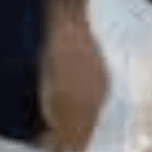
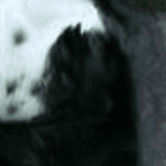
Known Diseases
Eye diseases
Often occur with allergies and intolerances.
MDR1 defect
The MDR1 defect is a defect in the MDR1 gene that can occur in some breeds of dogs and in humans. This results in the deficient or absent synthesis of a certain protein which is an important component of the blood-brain barrier, leading to hypersensitivity to some drugs.
Metabolic diseases (cystinuria)
Cystinuria is a hereditary metabolic disease. Affected dogs lack a transport protein for certain amino acids (protein building blocks). In the kidney, the task of this transport protein is a return transport of amino acids from the urine into the bloodstream.
Other large dogs
Useful Articles
You can find articles that might interest you in the dogbible blog to match your favorite breed.
Visit our magazineto stay up to date on dog trends.
To find out more, view our Privacy Policy
Find here the breed that suits you and find out what character traits it has. Here you can also learn more about the origin, size and weight of your favorite breeds.
Matching your favorite breed, you'll find articles that might interest you on the dogbible dog blog.
How much does a vet visit cost for a dog?
5 beautiful dog places in Mallorca
Dog licence: Baden-Württemberg introduces compulsory dog licence
Kennel cough - If your dog coughs, you should know this disease





